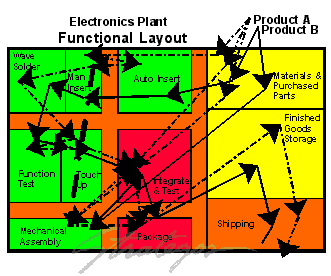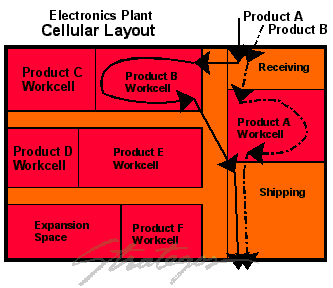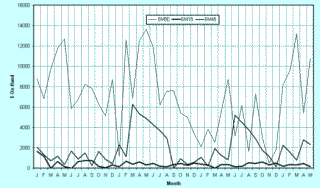Chaos, Complexity & Ashby's Law
Why Scheduling Goes Berserk
Ashby's Law
"The complexity of a control system must be equal to or greater than the complexity of the system it controls."
It Gets Worse
Ashby's Law concerns the relationship of a control system to the system it attempts to control. One version of Ashby's Law is in the box at right. Ashby's Law tells us that a complex system requires a complex controlling device. Conversely, simple systems require only simple controllers for successful operation.
W. Ross Ashby
 William
Ross Ashby was a major contributor to the field of cybernetics. His achievements are
referenced repeatedly in the cybernetics literature. He pioneered the concept of a
"homeostatic machine" which is fundamental to the development of the mathematical models
of cybernetics
William
Ross Ashby was a major contributor to the field of cybernetics. His achievements are
referenced repeatedly in the cybernetics literature. He pioneered the concept of a
"homeostatic machine" which is fundamental to the development of the mathematical models
of cybernetics
The implication for Lean Manufacturing is that we should first simplify the process. That does not mean that the process technology of each operation must be simple; only that the number of steps, the material paths and the number of variations that affect the inventory should be simple.
Cellular layouts simplify processes. They organize work around a product or a narrow range of similar products. Materials sit in an initial queue when they enter the cell. Once processing begins, they move directly from process to process. Notice the simplicity of material flow. Scheduling, supervision and many other elements illustrated below.


Chaos In Scheduling Example
The charts below show on-hand balance for six part numbers in an actual factory. Note the seemingly random pattern.
The inventory system was a simple Re-Order Point system with steady demand. There should be some semblance of the classic saw-tooth pattern. Moreover, the demand for each of these products was roughly proportional over time For every ten 4M24's sold there should have been two 4M90's sold. This proportional demand is also not reflected in the inventory.
While there were external random factors there is also good reason to believe that the system itself was inherently unstable and/or chaotic.
To minimize chaos and instability, we must deal with root causes. The table summarizes these root causes and common preventive strategies. Note that Kanban, by its nature, addresses most of the root causes.
| Cause | Prevention Tactics |
| Time Delays |
|
| Amplifi- cation |
|
| Complexity |
|
| Non- Linearity |
|
References
Sterman, John D., Business Dynamics: Systems Thinking & Modeling for a Complex World, Irwin McGraw-Hill, New York, 2000.
Hopp, Wallace J. and Spearman, Mark L., Factory Physics, Irwin McGraw Hill, New York, 1996.
Forrester, Jay Wright, Industrial Dynamics, Pegasus Communications, (1961)

■ ■ ■ ■ ■ ■ ■





